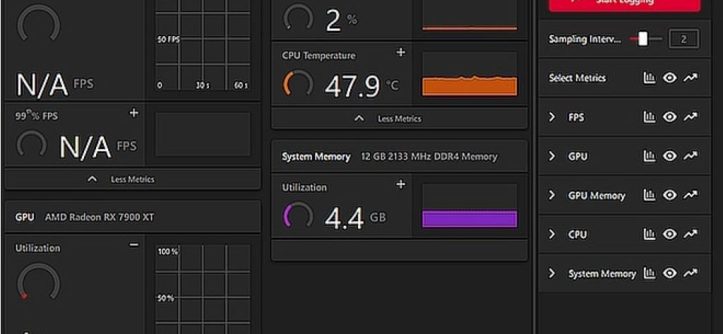Understanding GPU Control Software Compatibility
Many PC users wonder whether they can access NVIDIA features on their AMD graphics cards. This question becomes particularly relevant when upgrading systems or switching between GPU manufacturers. According to experts at Hawaii Web Studio, understanding the fundamental differences between these two graphics card ecosystems helps users make informed decisions about their hardware configurations.
Graphics processing units from different manufacturers operate with proprietary software and drivers. Each company develops unique tools to optimize performance and customize visual settings. Therefore, attempting to use one brand’s software with another’s hardware typically leads to compatibility issues. However, there are alternative solutions available for AMD users seeking similar functionality.
Can You Use NVIDIA Control Panel with AMD Graphics Cards?
The straightforward answer is that does nvidia control panel work for amd systems is no. NVIDIA Control Panel is designed exclusively for NVIDIA graphics cards and will not function with AMD hardware. This software communicates directly with NVIDIA GPU architecture through specific drivers that AMD cards cannot interpret or execute.
Additionally, attempting to install NVIDIA Control Panel on a system with only AMD graphics will result in error messages or failed installations. The software checks for compatible hardware during setup and refuses to proceed without detecting an NVIDIA GPU. This protection mechanism prevents potential system conflicts and ensures stable operation.
AMD’s Native Solution: Radeon Software
AMD provides its own comprehensive control suite called AMD Radeon Software. This application offers similar functionality to NVIDIA Control Panel, allowing users to adjust graphics settings, monitor performance, and optimize their gaming experience. The software receives regular updates and includes features specifically designed for AMD architecture.
Radeon Software includes several powerful tools for customization. Users can access display settings, create custom color profiles, and manage multiple monitors effortlessly. Furthermore, the interface provides straightforward navigation that makes finding specific settings quick and intuitive.
Key Features Available in AMD Radeon Software
AMD’s control panel alternative delivers numerous capabilities for graphics management. The software includes performance tuning options that let users overclock their GPUs safely. These features come with built-in safeguards to prevent hardware damage from excessive adjustments.
Moreover, Radeon Software offers game-specific optimization profiles. The application automatically detects installed games and suggests optimal settings based on your hardware configuration. This automation saves time and ensures smooth gameplay without manual tweaking.
The recording and streaming features rival those found in NVIDIA’s software suite. Users can capture gameplay footage, take screenshots, and broadcast directly to popular streaming platforms. These tools integrate seamlessly with the overall software package.
Alternative Methods for Cross-Platform Features
While native NVIDIA features remain unavailable on AMD hardware, some third-party applications provide similar functionality. MSI Afterburner, for example, works with both NVIDIA and AMD graphics cards. This popular utility enables GPU monitoring, fan control, and overclocking regardless of your card manufacturer.
Similarly, display calibration tools from independent developers offer universal compatibility. These applications adjust color accuracy, gamma curves, and other visual parameters without requiring manufacturer-specific software. Therefore, users can achieve professional-grade color management on any graphics card.
Understanding Driver Architecture Differences
NVIDIA and AMD utilize fundamentally different driver architectures. NVIDIA’s software stack includes CUDA cores and proprietary technologies like DLSS and ray tracing implementations specific to their hardware. Consequently, their control panel interfaces directly with these unique components.
AMD employs its own technologies, including FidelityFX and Radeon Anti-Lag. Their driver design prioritizes open-source compatibility and different performance optimization strategies. This architectural divergence explains why cross-compatibility between control software remains impossible.
According to Tom’s Hardware, each manufacturer’s approach to GPU design influences their software development philosophy. These design choices affect everything from power management to texture processing.
Maximizing AMD GPU Performance Without NVIDIA Software
AMD users can achieve excellent performance through native tools and proper configuration. Start by ensuring you have the latest Radeon Software version installed from AMD’s official website. Updates frequently include performance improvements and bug fixes that enhance system stability.
Next, explore the Radeon Software interface to familiarize yourself with available options. The Gaming tab provides per-application settings where you can adjust resolution scaling, anti-aliasing, and texture filtering. These granular controls allow fine-tuning for optimal visual quality and frame rates.
Additionally, enable Radeon Chill to reduce power consumption during less demanding gameplay moments. This feature dynamically adjusts frame rates based on in-game action, extending hardware lifespan while maintaining smooth performance during intense sequences.
Common Misconceptions About GPU Software
Many users mistakenly believe that installing drivers from one manufacturer while using another’s hardware provides some benefit. This practice actually creates conflicts that can destabilize your system. Always use manufacturer-matched drivers and control software for reliable operation.
Another misconception involves thinking that NVIDIA features are universally superior to AMD alternatives. In reality, both companies offer competitive technologies suited to different use cases. AMD’s solutions often provide better value at specific price points and excel in particular workload types.
Troubleshooting AMD Radeon Software Issues
If Radeon Software fails to launch or respond properly, several troubleshooting steps can resolve common problems. First, perform a clean driver installation using AMD’s Cleanup Utility. This tool removes residual files that might interfere with proper software function.
Subsequently, check Windows Update for any pending system updates. Graphics software relies on current operating system components, and outdated Windows versions sometimes cause compatibility problems. Keeping everything current prevents most issues.
Should problems persist, visit AMD’s support forums where community members and official representatives provide assistance. These resources contain solutions for virtually every known issue affecting Radeon Software functionality.
Future Developments in GPU Software
The graphics card industry continues evolving rapidly with new technologies emerging regularly. Both NVIDIA and AMD invest heavily in software development to differentiate their products. Future iterations of control software will likely include enhanced AI features and more sophisticated automation.
Cross-platform compatibility remains unlikely given the competitive nature of the GPU market. However, standardization efforts in areas like DirectX and Vulkan provide common ground for developers. These shared technologies ensure games and applications run smoothly regardless of GPU manufacturer.
Conclusion
Using NVIDIA features on AMD graphics cards remains impossible due to fundamental hardware and software incompatibilities. NVIDIA Control Panel works exclusively with NVIDIA GPUs and cannot recognize or control AMD hardware. However, AMD provides comprehensive alternatives through Radeon Software that deliver comparable functionality tailored to their architecture.
AMD users should embrace native tools rather than seeking cross-platform solutions. Radeon Software offers robust features for performance tuning, visual customization, and system monitoring. By learning these tools thoroughly, users can maximize their AMD GPU potential without needing NVIDIA software.
Therefore, focus on understanding and utilizing manufacturer-specific software designed for your hardware. This approach ensures system stability, optimal performance, and access to features specifically engineered for your graphics card architecture.
Frequently Asked Questions
Can I install both NVIDIA and AMD drivers on the same system?
Installing both driver sets simultaneously generally causes conflicts and instability. If your system contains both NVIDIA and AMD GPUs, Windows will manage separate drivers for each device. However, having control panels from both manufacturers can create confusion and potential software conflicts.
What happens if I try to install NVIDIA Control Panel with only AMD graphics?
The NVIDIA Control Panel installer checks for compatible hardware during setup. Without detecting an NVIDIA GPU, the installation will fail or display error messages. Even if somehow installed, the software would not function since it cannot communicate with AMD hardware.
Does AMD Radeon Software offer the same features as NVIDIA Control Panel?
Both applications provide similar core functionality including display management, performance tuning, and game optimization. Each offers unique features specific to their respective hardware. While interfaces differ, AMD users can accomplish equivalent tasks through Radeon Software.
Are there universal GPU control applications that work with all brands?
Some third-party utilities like MSI Afterburner offer cross-platform compatibility for basic functions such as monitoring and overclocking. However, manufacturer-specific features remain exclusive to native control software. These universal tools complement rather than replace official applications.
Which GPU control software is better for gaming?
Both NVIDIA Control Panel and AMD Radeon Software provide excellent gaming optimization tools. The “better” choice depends entirely on which GPU you own. Each software package is optimized for its respective hardware, making direct comparisons less relevant than ensuring you use the correct software for your specific graphics card.
Related Topics:
How to Use Monitor Multiple 4 Input Same Time





Leave a Reply